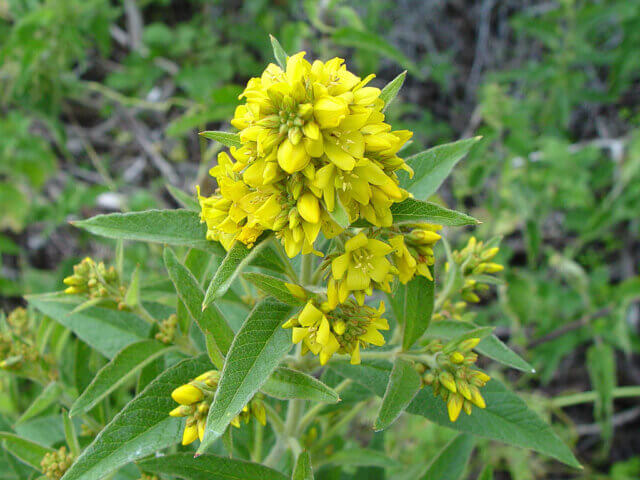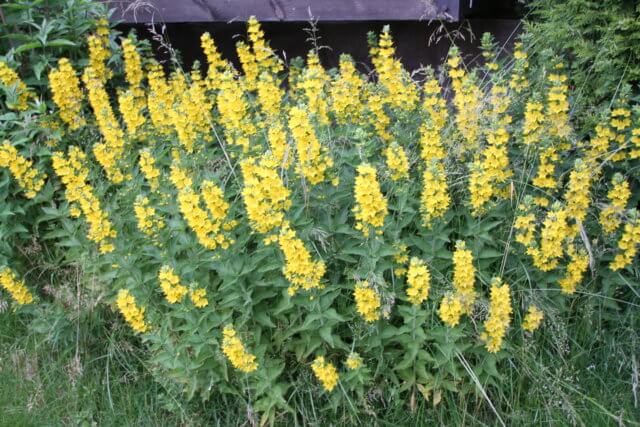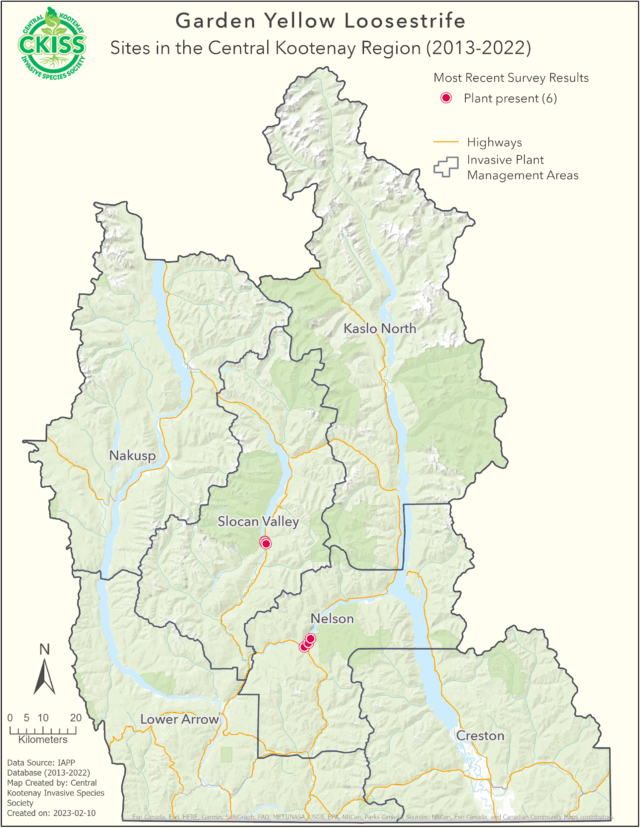Lysimachia vulgaris
Description
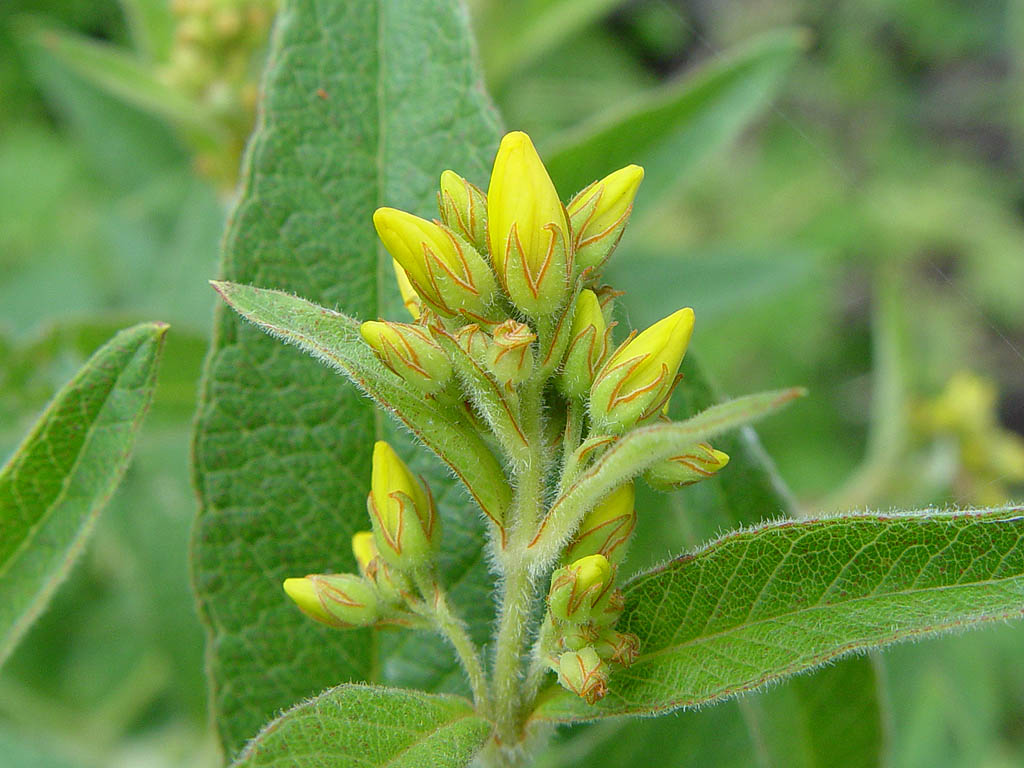
- Bright yellow, five-petaled flowers clustered at the top of the plant
- Calyx has reddish-brown margins
- Garden loosestrife looks very similar to yellow loosestrife (Lysimachia punctata), but the flowers of the Yellow loosestrife grow along the stem, not clustered near the top of the plant as in Garden loosestrife.
- Garden loosestrife is not actually related to Purple loosestrife, but does occupy similar environments and has a similar aggressive growth habit.
- Leaves: lance-shaped, dotted with black or orange glands
- Leaves are arranged in whorls around the stem.
- Stems & leaves are softly hairy
- Grows in moist habitats such as wetlands, riparian areas, and lakeshores, but it can also grow in upland sites
- Spreads by seeds & rhizomes (rhizomes can be up to 15 feet long!)
- Native to Eurasia, and introduced as a garden ornamental
Consequences of invasion
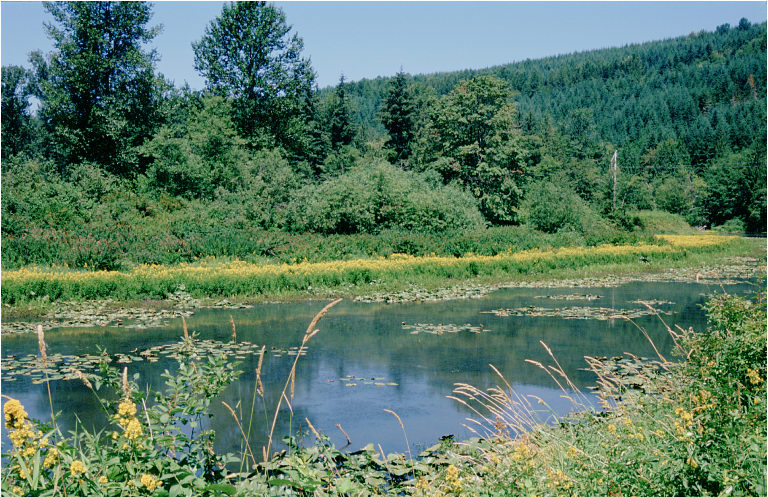
- Garden loosestrife’s dense & aggressive growth outcompetes native vegetation in wetland ecosystems.
- This reduces habitat for waterfowl, wildlife, birds, and fish.
- Dense growth in riparian areas impedes water-recreation opportunities
- This plant is so aggressive that it has been known to outcompete Purple Loosestrife, which itself is so invasive that it can replace 50 – 100% of the native biomass in wetlands! (Washington State Noxious Weed Control Board)
Status in the CKISS region
- There is currently insufficient information about garden yellow loosestrife in the CKISS region to assign it a management category on the CKISS Annual Priority List.
- There is insufficient information for this species regarding its distribution, impacts, potential for spread, and/or feasibility of control.
- CKISS plans on carrying out inventory as required, monitoring known locations, and/or finding out more information from other regions.
- To learn more about how CKISS classifies and manages invasive species, see our Invasive Species Priority Lists page.
Integrated pest management options
- Prevention: Be PlantWise! Grow non-invasive or native plants in your garden
- Mechanical: Small areas of seedlings can be dug up & larger isolated plants can be removed by hand if care is taken to remove all rhizomes
- Cultural: Covering seedlings or very small populations with black plastic may be effective
- Biological: No biocontrol agents for this species are currently available in BC.
Additional resources
